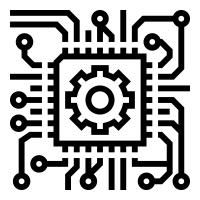What is Microbiologists?
Investigate the growth, structure, development, and other characteristics of microscopic organisms, such as bacteria, algae, or fungi. Includes medical microbiologists who study the relationship between organisms and disease or the effects of antibiotics on microorganisms.
Minimum education level
PT3
SPM
STPM
Diploma
Degree
Average Salary
Example of a Job Position
Task
Knowledge
Education and Training
Knowledge of principles and methods in designing curriculum, training, teaching, and instruction for individuals and groups, as well as measuring the effects of training.
Mathematics
Knowledge of arithmetic, algebra, geometry, calculus, statistics, and their applications.
English
Knowledge of the structure and content of English, including the meaning and spelling of each word, composition rules, and grammar.
Biology
Knowledge of plant and animal organisms, their tissues, cells, function, interdependence, and their interactions with the environment and each other.
Chemistry
Knowledge of the composition, structure and chemical properties of substances and chemical processes and transformations that occur. Includes the use of chemicals and their interactions, alarms, production techniques and disposal methods
Skills
Active Listening
Give full attention to the words of others, set aside time to understand the points presented, ask questions appropriately, and not interrupt at the wrong time
Writing
Communicate effectively through writing that suits the needs of the audience
Critical Thinking
Using logic and reasoning to identify the strengths and weaknesses of alternative solutions, conclusions, or approaches to the problems handled
Reading Understanding
Understand sentences and paragraphs written in work documents.
Science
Use scientific rules and methods to solve problems.
Capability
-
1
Information Arrangement - The ability to arrange various things and actions in a certain sequence or pattern according to the rules specified (for example: number patterns, letters, words, pictures, mathematical operations).
-
2
Deductive Reasoning - The ability to apply general rules to certain problems in order to produce reasonable answers.
-
3
Inductive Reasoning - The ability to combine pieces of information to form general rules and conclusions (including finding relationships between seemingly unconnected events).
-
4
Written Understanding - Ability to read and understand information and ideas conveyed through writing
-
5
Category Flexibility - The ability to produce or use different groups of rules to combine or group things in new ways.












